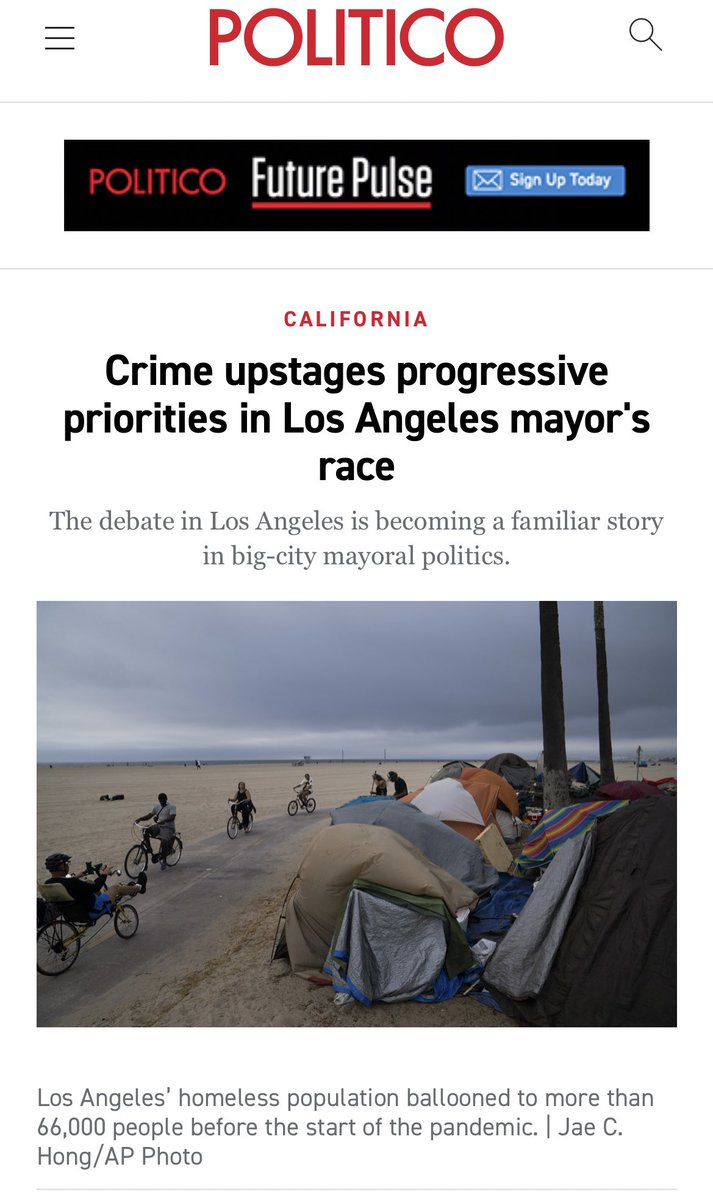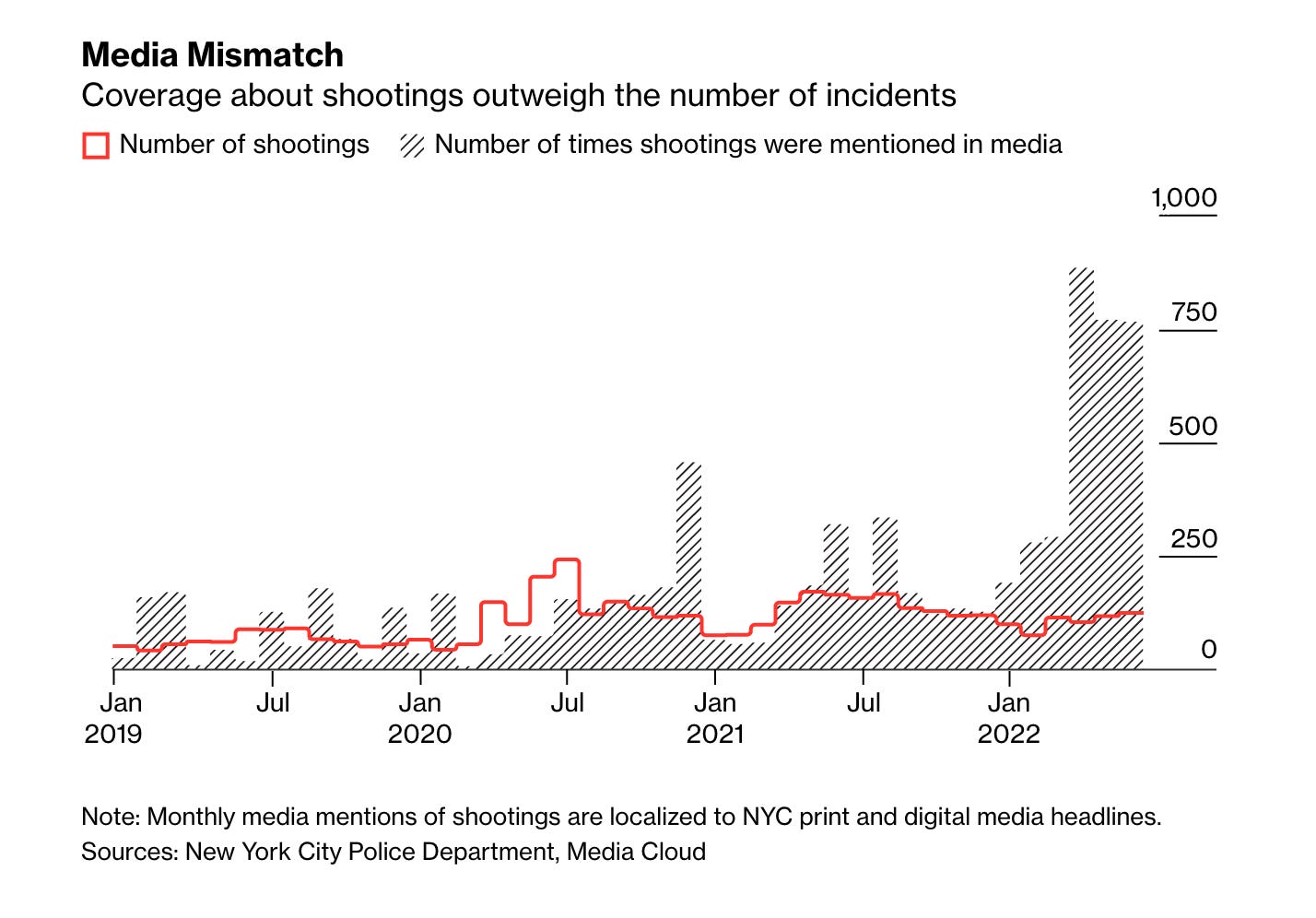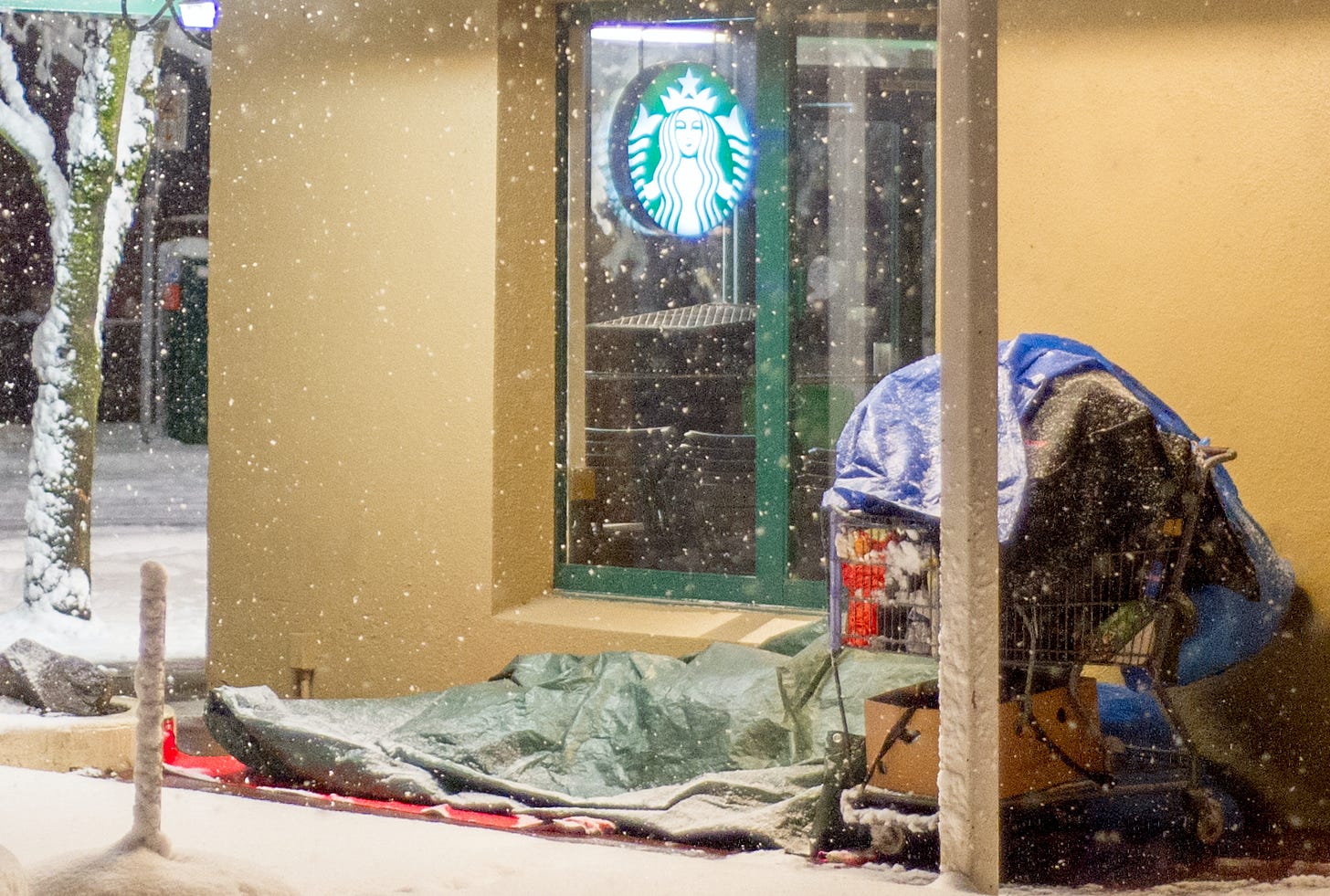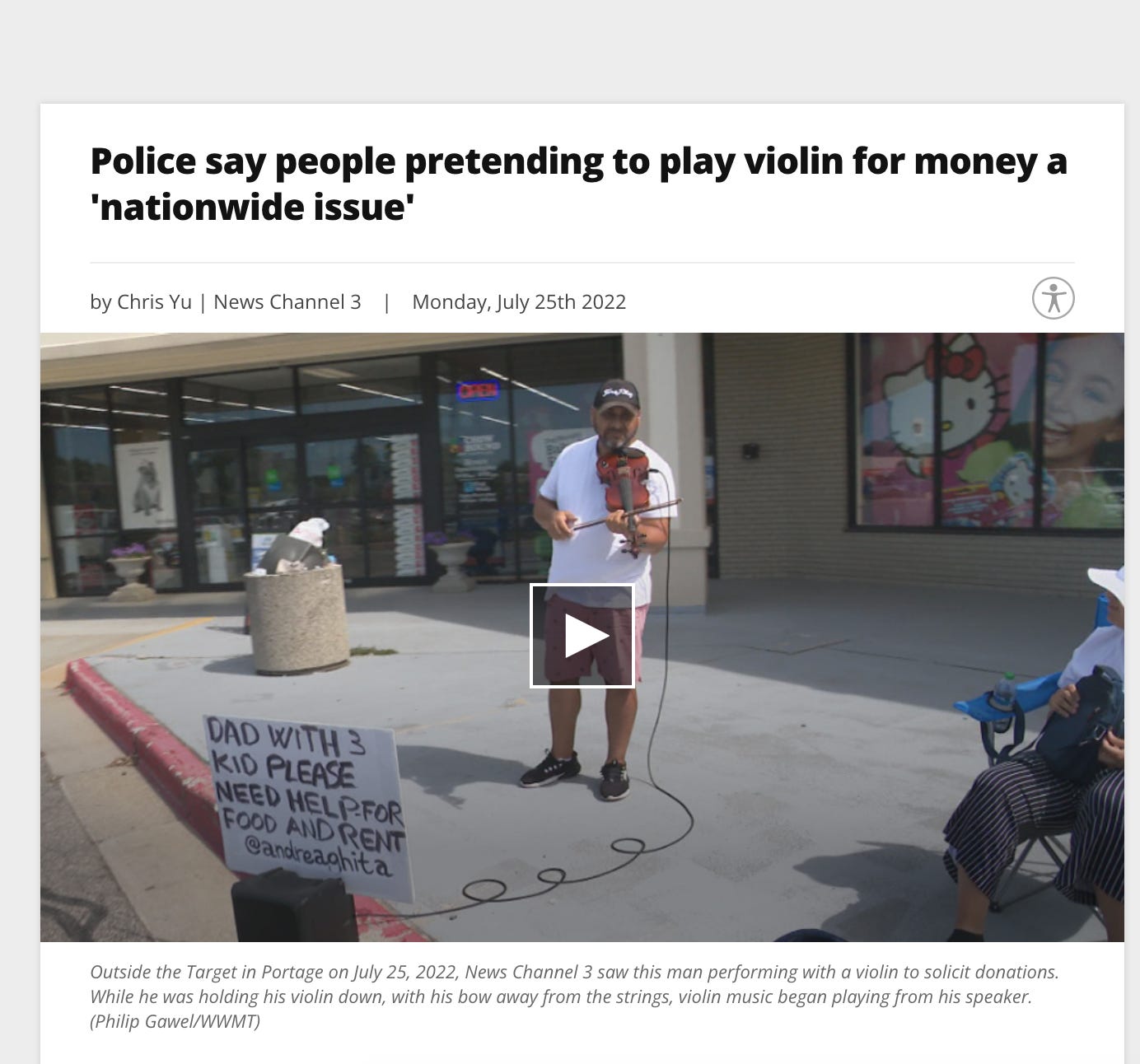People "Feel Unsafe" Because Visible Poverty Is Everywhere
Media hysteria around “rising crime” works because it touches on something real: a palpable increase in visible human suffering. What matters is how we alleviate that suffering.
A Washington Post article this week largely echoing Starbucks corporate’s claim that it’s shuttering its D.C. Union Station store due to “safety fears” is par for the course for this genre. As I laid out last week, Starbucks is pursuing closures that disproportionately affect stores that are unionized, or are about to unionize, using “crime” as a pretext. At the same time, the company is using the broader narrative of “Blue City Business Shut Down Due to Weak-on-Crime Libs” to contribute to a heightened political climate of anti-Black Lives Matter backlash. The Washington Post piece, to its credit, does air some skepticism about Starbucks’ self-serving claims from Ward 6 Councilmember Charles Allen, and then casually mentions that crime is actually down at Union Station. But it’s one of 1,000 such articles of late, a popular and impactful genre of Vibes Crime Reporting, conflating actual violence with the American public’s perception—which, as we all know, has historically not been the most sober and even-keeled gauge of reality.
But it is a phenomenon worth interrogating because it has tremendous political consequence.
“Safety” is a curious word because it could mean actual instances of violence, but also includes the perception of potential violence. Homelessness is used interchangeably with crime despite it not being one—beyond a social one inflicted upon homeless people, rather than carried about by them. Countless headlines and news broadcasts daily conflate poverty with crime. It’s so routine one hardly notices:

But I think it’s very important that those on the left, abolitionists, and anyone who desperately wants our society to fundamentally rethink how we address issues of public safety, not be precious about this—not act as if it’s only rich, white latte liberals and conservatives driving the post-Black Lives Matter backlash. Poll after poll after poll shows “crime” is an urgent concern for all races and class demographics, and it has little to do with crime stats as such. This isn’t to say poor communities aren’t experiencing crime—obviously they are, especially gun violence—but this has long been the case. The Vibes may be unscientific, but they are real.
What’s changed, I argue, is three factors: (1) Murder rates are objectively on the rise, even as other crime falls or remains static. They have fallen of late in some cities, but it is broadly true that murders have increased since 2019. This is not a media creation. (2) Our media, however, routinely inflates the the prevalence of murder relative to its actual increase with tabloid and salacious headlines, in addition to outright lying about a rise in non-murder crimes. (3) There has been a sharp rise in Visible Poverty in urban areas. As disruptions by the pandemic created a whole host of externalities, pandemic aid was cut by bipartisan consensus, and rent prices spiral out of control, there are simply more visible poor people. This is what the aforementioned Post article is touching on, and a consistent theme in dozens of articles on the subject of “crime”: the current situation, more than anything, just feels unsafe.

Dismissing the Vibes isn’t tactically smart and can be perceived as glib, denialist, or detached. People are seeing more visible evidence of widespread poverty. And this trend, echoed and replayed nonstop by local media and viral Facebook posts, contributes to a broad perception that our society is falling apart. The Vibes, therefore, are thrown into the catch-all category of “safety.”
And with this sleight-of-hand, with this conflation, all social ills fall under the purview of policing and prisons. Vibes, by their very nature, become the purview of our carceral state.
A healthy society, when faced with obscenely high rental prices and the logical byproduct of this social failure—a spike in Visible Poverty brought about by a once-in-a-century pandemic and widespread homelessness—would respond with a national conversation about the failures of the American liberal state to meet people’s basic needs. There would be nonstop local news coverage of how rent is too expensive and how this is driving housing insecurity. Our president would pledge $37 billion to combat homelessness with real housing solutions. Instead, the public discourse around Visible Poverty has been, as always, to turn to police, jails, and a deep bench of dead-eyed careerist Tough on Crime prosecutors and mayors. Our president talks nonstop about how much we need more police, how he can’t wait to hand another $37 billion to police, and our media puts all social ills into the vague bucket of “public safety” with the parallel assumption that the solution is more police and longer sentences. The public, through decades of ideological conditioning, is only familiar with one solution to poverty, which is to lock-up the unwanted and surplus populations so we simply Don’t Have to See The Problem. Like someone who is $30,000 in credit card debt blocking creditors’ phone numbers and throwing away late notices in the mail, we think by simply removing the problem from our mind it will go away.
But, of course, it doesn’t. A whole generation of black men and women were decimated, millions of lives ruined, families broken apart, wealth disappeared, the last time America decided it needed to Get Tough on Crime. Then, too, there was qualified buy-in from some black leaders who were offered no other alternative to the gun violence destroying their cities. It was cops or nothing, so they chose the cops. Now, just as then, we are told minorities really love cops and that cops were actually the True Wishes of Communities of Color. Which is convenient, because, as I noted last month, this happens to be the only time the wishes of black voters have ever been prioritized by Democratic leadership or elite liberal media. When these same black voters called asking for reparations, robust social welfare, free housing, and good union jobs they were forwarded to voicemail.
So it’s police and longer sentences we get. Virtually no national conversation about tens of billions for free public housing and mental health, much less housing as a human right. The White House had a half-assed plan to “fight homelessness” that came and went last year. Just a press release; no mention in the New York Times or Washington Post. Some money was handed out to cities, but this can largely be used however they want—including on more police. There was no media push whatsoever. In his March 2022 State of the Union address, Biden mentioned police 10 different times and homelessness or poverty zero. The Fed and our elite media are using the chainsaw of cutting interest rates to remove the cyst of inflation, intentionally driving up unemployment, and promoting a recession to discipline labor. We see little-to-no media outrage about the crime of homelessness, rather than the crime of having to see the homeless. The victims are not those suffering from poverty and mental health issues, but the “homeowners” and “business leaders” who have to witness their slow, preventable deaths.



Right-wing think tanks and hacks plant stories about how the problem with liberal attempts to “battle homelessness” is that we rely too heavily on Housing First, which is 100 percent untrue. But it doesn’t matter. The anti-Housing First reactionary politics that fueled California gubernatorial candidate Michael Shellenberger are repeated ad nauseam without criticism in media platforms, from the Huffington Post to The Joe Rogan Experience. The idea that we simply give away too much housing without preconditions is increasingly popular because it offsets moral responsibility for Visible Poverty onto to the impoverished, rather than society, which is to say rather than you and me. It’s not your fault, and it’s certainly not my fault, you see—it’s actually that the victims of poverty simply don’t want to get better.
Countless headlines and articles that conflate an increase in police budgets with concern for “public safety” simply take for granted that the former leads to the latter. There’s no sense of the moral costs of more police and longer sentences—just a vague feeling Something Is Being Done. When the average person is accosted by someone suffering from Visible Poverty and mental health issues outside of a Starbucks, their response is, “Why isn’t this man in jail?” not, “Why did society fail to care for this person?” Because this is what they are conditioned to think, by the media, politicians, pop culture, and decades of carceral ideological framing. Cruelty is baked into our puritan culture, reinforced daily by everything from Perseverance Porn to nonstop pandemic-themed Welfare Queen tropes. Indeed, local news goes out of their way to pick on the most vulnerable. Here, a local reporter in Florida valorizes an unhinged rightwing troll with a history of financial misconduct and allegations of workplace violence for standing up to Big Panhandler:

Last year, a Los Angeles Times columnist doxxed a homeless encampment, egging her readers on to visit a specific homeless encampment to look for their stolen items. (After public outrage, the piece was edited to omit the relevant coordinates.) Just this week, Sinclair Broadcasting pushed out to its dozens of local media outlets a story about a housing insecure man allegedly faking playing a violin for change on the streets.
It went viral and has been reported by several more outlets. "Police say people pretending to play violin for money a 'nationwide issue,'" the article tells us.
“A nationwide issue.” A beggar fake playing the violin for money. If you thought you’ve seen this story before it’s because the exact same outrage was also pushed by police P.R. departments in 2021 and 2020.
Words cannot convey how depraved this is, how warped our priorities are, how deeply cynical and mean and nasty our media culture is. The world is heating more each year, 38 million Americans are food insecure, 4 out of 5 Americans with diabetes have gone into debt just to afford insulin. And dozens of outlets rush to put on our screens, and the screens of our frightened aunts and grandfathers, the story about someone fake playing a violin so they can eat. Over 300 news stories about a single shoplifting incident in San Francisco, with articles in local news outlets from Kansas to Michigan to Florida. What the fuck are we doing?
And we wonder why people’s response to Visible Poverty is to make this horrific sight intelligible by blaming the poor and demanding they be “swept” up. Until this visceral, widespread reaction to Visible Poverty—fueled constantly by local media that’s little more than an appendage for the real estate industry—shifts, the political dynamic of mindlessly pumping more and more money into prisons and police cannot change. What, in an otherwise rational world, would be perceived as a systemic failure of the “richest country on Earth” to care for its poor has been moralized, compartmentalized, and reduced to millions of individual moral failings and Bad Life Choices. The Vibes are real—those looking to exploit The Vibes to bury Black Lives Matter reforms once and for all are in full force. The average media consumer and voter is only given One Option to “tackle public safety,” and if you disagree with this One Option you’re unserious, or belittling these fears, or denying black voters’ agency or whatever.
Many crime pundits would argue they’re actually lobbying for both more police and more social spending. But we know this is a convenient fiction, a balm to pitch the inevitable and already-decided-upon carceral uptick. New York City Mayor Eric Adams has mastered this faux “third way,” recently announcing $8 million for “homeless outreach,” which sounds enlightened and humane until one realizes it includes zero monies for actual long-term housing. City officials will “reach out” to arrest you for petty crimes. Or, at best, they will “reach out” to give you options of abstinence-only substance treatment, cockroach infested shelters, a precarious, low-paying job, or other avenues of bootstrap betterment—but never an actual home. No, this would create a moral hazard of robust social spending which, we are now told, is what’s driving inflation.
All that’s left then is meanness, fear, atomization, and increasingly complex moral frameworks that justify doing nothing as we see, with our own eyes, people suffering before us without meaningful state assistance. Because if it’s a collection of individual moral problems, then it’s a criminal problem. And if it’s a criminal problem, it can be solved with arresting and caging, and there’s nothing asked of us other than voting for more carceral policies and simply looking the other way as Visible Poverty is displaced to some anonymous prison somewhere out of sight and out of mind.





Everything I’ve been thinking and wondering put into words so succinctly! Thank you!!!